In the intricate world of maritime logistics, understanding the types of project cargo and their characteristics is crucial for efficient and safe transportation.
Mismanaging these diverse cargo types can lead to significant logistical challenges and economic losses.
Here we delve into the world of project cargo, offering key insights into its various types, handling complexities, and the impact they have on global trade. By understanding these aspects, industry professionals can optimize their operations and mitigate risks.
Key Takeaways:
- Each project cargo type demands unique handling techniques and equipment, underscoring the need for specialized knowledge and resources.
- Ensuring safety and regulatory compliance is paramount in project cargo transportation, given its complex and oversized nature.
- The effective management of project cargo has a profound impact on global trade and economic activities, making expertise in this area vital.
Project Cargo in the Maritime Industry
In the vast and ever-evolving expanse of the maritime industry, project cargo stands out as a cornerstone, pivotal to global trade dynamics. This specialized cargo, encompassing heavy-lift and oversized items, is more than just a logistics challenge; it’s a testament to human ingenuity in the face of complexity.
As we delve into this realm, it’s crucial to recognize the sheer scale and diversity of project cargo. From giant turbines destined for offshore wind farms to entire factory components crossing oceans, each item represents a unique puzzle, requiring bespoke solutions.
The role of project cargo in the global supply chain cannot be overstated. It’s the muscle behind major infrastructure projects and a key driver of international development. As the world becomes increasingly interconnected, the demand for innovative project cargo solutions surges, bringing to light new challenges and opportunities.
Different Types of Project Cargo
The world of project cargo is as diverse as it is complex, encompassing a range of specialized shipments, each with its unique requirements and challenges.
Understanding these types not only enhances logistical efficiency but also mitigates potential risks associated with maritime transport.
Breakbulk Cargo
Breakbulk cargo, a key element in maritime logistics, includes a diverse array of non-containerized goods handled individually.
This category spans from construction materials to large machinery and industrial equipment, each presenting distinct logistical challenges.
Notably, breakbulk cargo often overlaps with project cargo, especially when it involves large, heavy, or high-value items requiring specialized handling due to their size, shape, or weight.
Further emphasizing this overlap, SHIPIT Logistics points out that breakbulk shipping may also be referred to as project cargo, heavy-lift shipping, or OOG (out of gauge) cargo shipping under certain circumstances. This highlights the fluidity and interchangeability of these terms within the industry.
FreightWaves offers a nuanced perspective, distinguishing between project cargo (specifically required breakbulk for projects like oil or wind farms) and heavy lift (very large objects such as turbines or gantry cranes). This differentiation underscores the specialized nature of breakbulk cargo within the broader category of project cargo.
Breakbulk cargo, particularly when considered as project cargo, typically includes large, heavy, or high-value items that require special handling due to their size, shape, or weight. Here’s a list of common items that fall under this category:
- Construction Equipment: Such as bulldozers, cranes, and excavators.
- Large Vehicles: Including mining trucks, tractors, and specialized vehicles.
- Steel and Metal Structures: Like beams, columns, and large metal fabrications.
- Wind Turbine Components: Blades, towers, and nacelles.
- Industrial Machinery: For instance, generators, turbines, and compressors.
- Modular Units: Including prefabricated buildings and housing units.
- Oil and Gas Equipment: Such as drilling rigs, pipelines, and storage tanks.
- Marine Equipment: Like yachts, boats, and marine engines.
- Power Plant Components: Including transformers and reactor vessels.
- Railway Equipment: Locomotives, railcars, and track sections.
- Aerospace Components: Aircraft parts, space vehicles, and satellite equipment.
- Renewable Energy Equipment: Solar panels, converters, and large batteries.
- Large Art and Sculptures: For exhibitions or public installations.
- Heavy Electrical Equipment: Power cables, switchgear, and substations.
These items are typically too large or heavy to be containerized and require specialized handling and transportation methods. Their handling often involves coordination between multiple logistics providers and the use of specific types of vessels and loading/unloading equipment.
Traditionally, breakbulk cargo was the norm before the advent of containerization. Today, it remains crucial for goods that are either too heavy, too big, or unsuitable for standard containers.
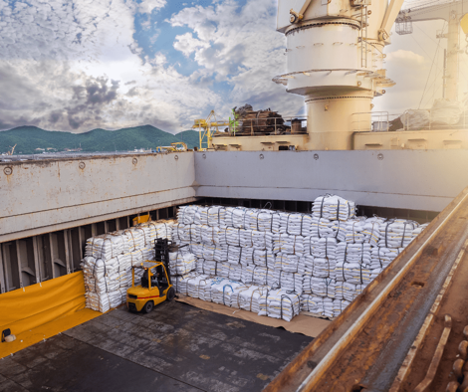
Loading and unloading these cargoes require specialized equipment and expertise. Bulk carriers or multi-purpose vessels designed for breakbulk cargo often have reinforced decks, derricks, and cranes capable of handling heavy and awkward loads.
A typical example of breakbulk cargo is the transportation of large construction vehicles or wind turbine components. These items, due to their size and shape, cannot be containerized and thus are loaded directly onto the vessel.
Efficient handling of such cargo is critical and involves precise coordination between the ship’s crew and port personnel. The process isn’t just about physical loading; it’s about meticulous planning, from stowage plans to ensuring cargo security during transit.
The challenges in breakbulk cargo transportation also extend to logistical aspects such as route planning, considering the cargo’s size and weight can affect a vessel’s stability and maneuverability. This necessitates skilled navigation and experienced handling, particularly in challenging weather conditions or when navigating through narrow channels.
Heavy-Lift Cargo
Heavy-lift cargo represents some of the most challenging and intriguing aspects of maritime logistics. This category includes exceptionally heavy or large items that often exceed the capacity of standard shipping methods. Typical examples of heavy-lift cargo are large industrial equipment like power plant components, offshore drilling rigs, and even entire factories.

Heavy-lift cargo generally includes exceptionally large or heavy items that exceed the capacity of standard shipping methods. Here are five common examples of heavy-lift cargo:
- Industrial Machinery: This encompasses oversized machinery such as large presses, manufacturing equipment, or mining machinery, which are often too heavy and large for standard transport methods.
- Power Plant Components: Including items like large generators, turbines, or transformers, which are crucial for power generation facilities and often weigh hundreds of tons.
- Offshore Oil and Gas Equipment: This category includes drilling rigs, offshore platforms, and subsea equipment. These items are not only heavy but also require precise handling due to their complexity and value.
- Marine Vessels: Smaller ships or large yachts that need to be transported overland or between water bodies. These can include naval ships, research vessels, or luxury yachts.
- Bridge Sections and Infrastructure Components: Large segments of bridges, highway overpasses, or large-scale structural components used in infrastructure projects. These items are typically pre-constructed and then transported to the site due to their enormous size and weight.
Handling these gargantuan items requires not just specialized equipment, but also a high level of expertise and precision. Heavy-lift ships, designed specifically for these tasks, are equipped with powerful cranes that can lift loads weighing hundreds or even thousands of tons. These vessels often have reinforced decks and advanced stabilizing systems to accommodate the extreme weight and size of the cargo.
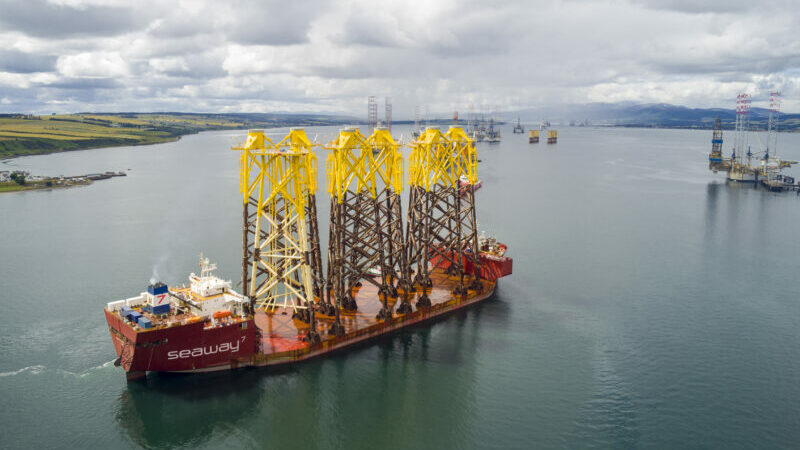
One of the key complexities in transporting heavy-lift cargo is weight management. Balancing the cargo’s weight is crucial to maintaining the ship’s stability during transit. This process involves intricate calculations and careful planning to ensure the load is distributed evenly across the vessel. Additionally, the loading and unloading processes are highly technical operations that require expert coordination and execution.
Another aspect of heavy-lift cargo transportation is the innovative handling techniques employed. For instance, the use of float-on/float-off (flo/flo) methods for extremely heavy items like ferries or superyachts, where the cargo is floated onto the deck of a semi-submersible ship, minimizes the need for lifting and reduces the risk of damage. This method is gaining popularity and is used in boat and yacht transportation.
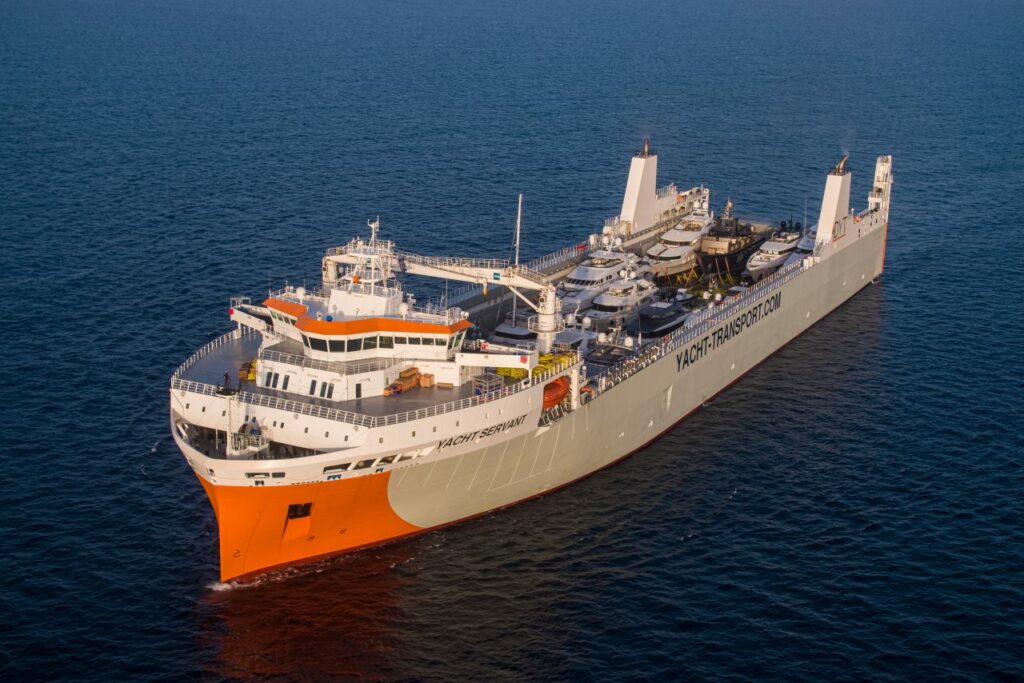
The transportation of heavy-lift cargo is a testament to human engineering and logistical capabilities. It’s not just about moving large items from point A to point B; it’s about doing so safely, efficiently, and with meticulous attention to detail that ensures the integrity of both the cargo and the transporting vessel.
Oversized Loads
Oversized loads in maritime logistics are a category that demands not only logistical prowess but also a keen understanding of legal frameworks. These loads typically exceed standard dimensions for length, width, height, or weight, making their transportation a complex endeavor that involves meticulous planning and compliance with numerous regulations.
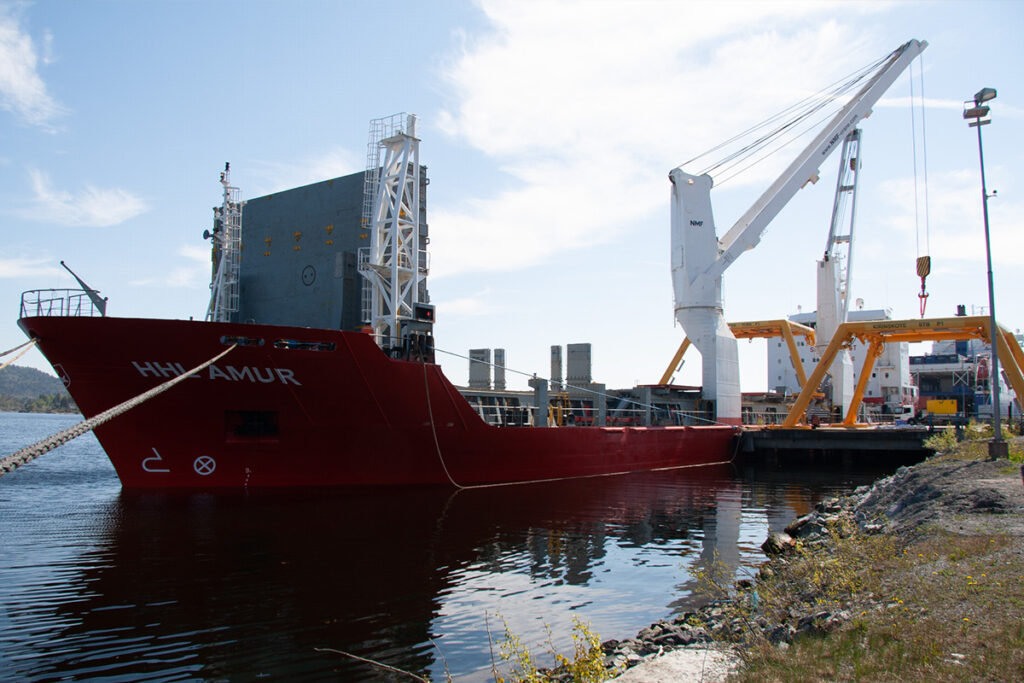
Here are five common examples of oversized loads:
- Wind Turbine Blades: These can be exceptionally long and require specialized handling and transport due to their size and vulnerability to damage.
- Large Propellers for Ships: Massive propellers used for marine vessels, often requiring special handling equipment and transportation methods due to their size and weight.
- Sections of Prefabricated Buildings: Large prefabricated sections of buildings, such as walls or complete room modules, which are too large for standard transport.
- Construction Cranes and Equipment: Tower cranes and large construction equipment that are essential for building projects but exceed normal size and weight limits.
- Railroad Cars or Locomotives: These are often too tall, wide, or long for standard containerized shipping and require special handling.
Transporting oversized loads often requires specialized vessels, such as flat-rack containers for cargoes that extend beyond the standard container size or open-top containers for tall items. Examples of oversized loads include large construction machinery, wind turbine blades, or even sections of prefabricated buildings.
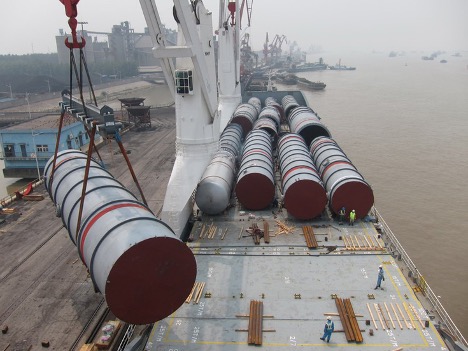
One of the key considerations in transporting oversized loads is route planning. This involves not just the sea journey but also the land transport to and from ports. Route planning for such cargoes often requires coordination with various authorities to ensure the route can accommodate the size and weight of the load, and in some cases, may even involve modifying infrastructure temporarily, such as removing street signs or power lines.
Legal compliance is another crucial aspect. Each country and region has its own set of rules and regulations regarding the transportation of oversized loads. This includes obtaining necessary permits, adhering to specific transportation times, and ensuring the load is properly secured and marked. Failure to comply with these regulations can result in significant fines, legal complications, and delays.
Managing oversized loads in maritime logistics is a delicate balance of logistical expertise and regulatory compliance. It requires a deep understanding of the capabilities of all types of cargo ships and their equipment, the limitations imposed by routes and infrastructure, and the legal requirements set by different jurisdictions. This comprehensive approach ensures the safe, efficient, and lawful transportation of these extraordinary cargoes.
Containerized Project Cargo
Containerized project cargo involves the transportation of large, heavy, or valuable items that, while oversized or special in nature, can still be accommodated in shipping containers. Here are five common examples of containerized project cargo:
- Machinery and Equipment Parts: This includes large components of industrial machinery, construction equipment, or manufacturing parts that can fit into open-top or flat-rack containers.
- Vehicle Components: Large parts of vehicles, such as chassis, engines, or other oversized automotive parts, often shipped in containers due to their size and need for protection during transit.
- Modular Construction Elements: Prefabricated building modules, such as bathroom pods or pre-assembled sections of buildings, that are designed to fit within container dimensions.
- High-Value Electronics: Large electronic equipment, including server racks or specialized technological apparatus, which require the secure and protected environment that containers provide.
- Oversized Industrial Supplies: This can include large rolls of cable, steel beams, or other industrial materials that are bulky but can be accommodated in containers.
These items, due to their size, weight, or value, are not suitable for standard container shipping but can be efficiently and safely transported in specialized containers such as flat racks or open tops. Containerized project cargo combines the benefits of containerized shipping — like standardization, ease of handling, and intermodal transport options — with the capability to move oversized or heavy items.
The primary advantage of containerization in project cargo is the standardization it brings. Standard shipping containers are designed to be easily loaded, stacked, transported, and unloaded, which significantly streamlines the logistics process.
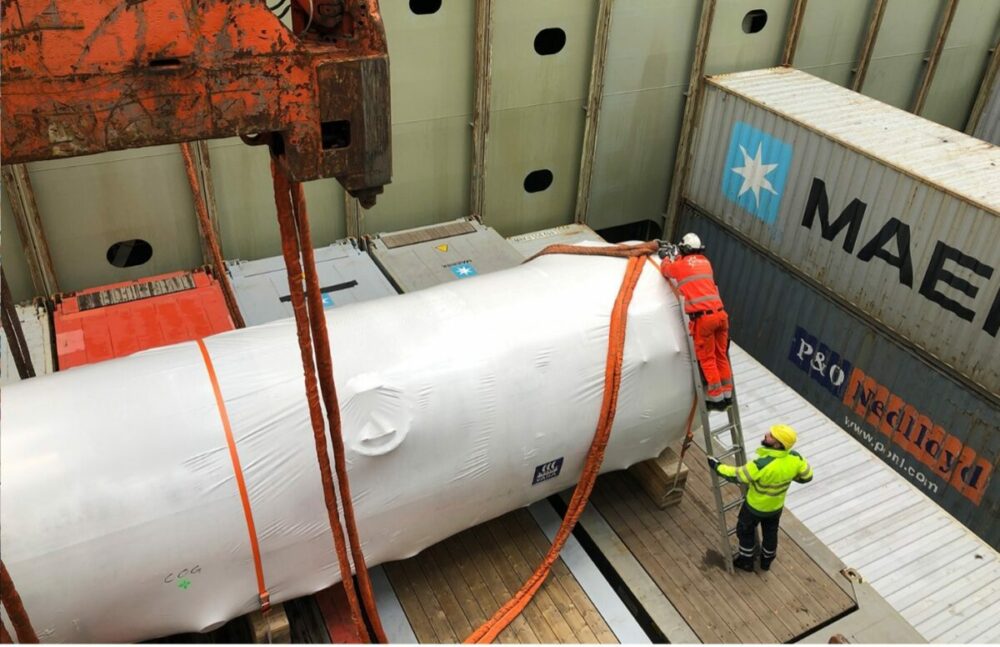
This uniformity allows for the efficient use of space on container ships and simplifies handling operations at ports. Examples of cargo suited for containerization include machinery parts, large vehicle components, and modular construction elements.
However, containerized project cargo also has its limitations. The size and weight of the cargo are constrained by the dimensions and load capacity of the containers. To address this, the industry has seen the development of specialized containers such as flat racks and open tops, which can accommodate wider or taller cargoes that exceed the limits of standard containers.
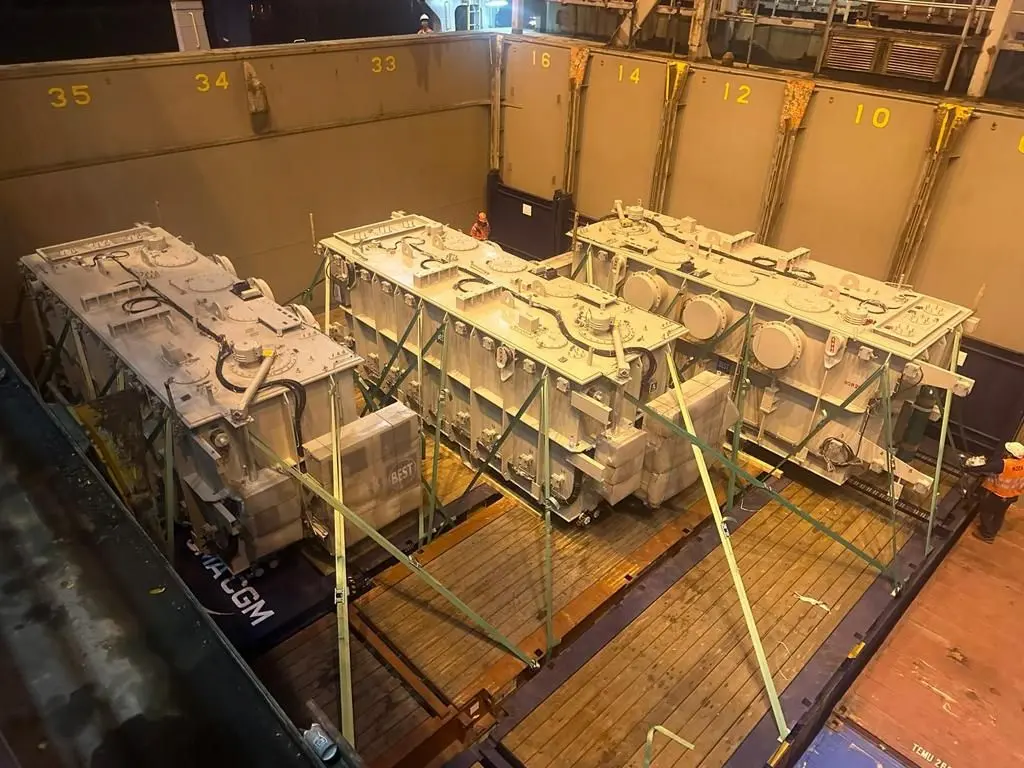
Innovative container ships have also been developed to handle these specialized containers. These vessels are equipped with advanced gear and strengthened decks to carry heavier loads, and their design allows for the secure and stable transportation of a wide range of cargo.
The efficiency of containerized project cargo is further enhanced by its compatibility with intermodal transportation. Containers can be easily transferred between ships, trucks, and trains, facilitating seamless door-to-door delivery. This interoperability reduces handling times and costs, making containerized project cargo a preferred choice for a wide range of industries.
Containerization has revolutionized the way project cargo is transported, striking a balance between the need for cargo security and handling efficiency. Its adaptability to different cargo types and compatibility with intermodal transportation systems have made it an indispensable part of modern maritime logistics.
Key Characteristics of Project Cargo: Safety, Insurance, and Risk Management
Project cargo, with its distinctive nature, necessitates an unwavering commitment to safety, comprehensive insurance coverage, and astute risk management. The handling of such cargo, often oversized or of significant value, demands specialized attention at every stage of its journey.
Safety Measures in Project Cargo Handling
Safety in project cargo logistics is a multi-faceted endeavor. It begins with strict adherence to safety protocols, especially when handling oversized or heavy items such as industrial equipment.
Heavy-lift vessels, designed for transporting such cargoes, are equipped with advanced gear and operated by skilled personnel, including stevedores with expertise in loading and unloading these unique items.
Additionally, warranty surveys conducted by marine surveyors play a critical role in ensuring the cargo and the vessel meet all safety standards. These surveys assess the risks associated with the cargo’s transportation and recommend necessary precautions to mitigate them.
Insurance and Risk Mitigation in Project Cargo
Insurance coverage for project cargo is tailored to address the specific risks involved in its transportation. This includes coverage for damage, loss, and even delays. The role of marine surveyors is again pivotal here, as they provide valuable insights into the risks associated with the cargo, influencing the insurance terms and conditions.
Risk management in project cargo transportation involves a thorough assessment of potential risks, including environmental factors, route challenges, and operational hazards.
A key aspect of this is the coordination between different parties involved – from the crew aboard the heavy-lift vessel to the stevedores and logistics teams on the ground. Effective communication and coordination are essential to anticipate and manage risks efficiently.
Moreover, real-time tracking and environmental monitoring systems are increasingly being used to oversee the cargo’s journey. This allows for immediate action in case of deviations from the planned route or unexpected incidents, ensuring a quick response to any potential risks.
The Future of Project Cargo in the Maritime Industry
The future of project cargo in the maritime industry is poised at an exciting juncture, shaped by rapid technological advancements, a push towards digitalization, and an increasing focus on sustainability. These elements are converging to redefine how project cargo is managed, transported, and delivered.
Embracing Digitalization and Automation
Digitalization is set to revolutionize the project cargo sector. The integration of advanced tracking systems, IoT (Internet of Things) devices, and AI-driven logistics solutions will enhance the visibility and efficiency of cargo handling. For instance, real-time tracking and predictive analytics can foresee and mitigate potential disruptions in the supply chain, ensuring smoother operations.
Automation in cargo handling is another key trend. Automated loading systems and autonomous vehicles, both onshore and aboard ships, are expected to reduce human error, increase safety, and improve turnaround times. This automation extends to administrative processes as well, where blockchain technology could streamline paperwork, making customs clearance and documentation more efficient.
Advancing Toward Eco-friendly Practices
Sustainability is becoming a cornerstone in the maritime industry, and project cargo is no exception. Eco-friendly practices, such as using ships powered by alternative fuels or implementing energy-efficient cargo handling techniques, are gaining momentum.
This shift not only addresses environmental concerns but also aligns with global regulations aiming to reduce the maritime industry’s carbon footprint.
Expert Forecasts and Technological Innovations
Experts predict that the future of project cargo will be heavily influenced by advancements in vessel design and material handling. Innovations such as larger, more versatile ships capable of accommodating a wider range of cargo types, and advanced cranes and lifting equipment, are on the horizon. These innovations will cater to the evolving demands of global infrastructure projects and industrial logistics.
Furthermore, the integration of advanced data analytics and machine learning algorithms is expected to optimize route planning and cargo handling strategies, further enhancing operational efficiencies.
In conclusion, the future of project cargo in the maritime industry is set to be transformative, marked by technological advancements, digitalization, automation, and a steadfast commitment to sustainability. These changes will not only streamline operations but also open new possibilities for handling complex and oversized cargoes, ensuring the industry remains at the forefront of global logistics and trade.
What are the main types of project cargo in maritime transport?
The main types of project cargo include breakbulk cargo, heavy-lift cargo, oversized loads, and containerized project cargo. Each type has unique handling and transportation requirements.
How does digitalization impact project cargo management?
Digitalization enhances project cargo management by improving tracking, route optimization through predictive analytics, and automating cargo handling processes, leading to increased efficiency and accuracy.
What are the key safety measures in project cargo transportation?
Key safety measures include regular safety drills, using advanced securing equipment, adhering to maritime cargo safety standards, and implementing rigorous safety protocols for cargo stabilization and handling.
How is sustainability being integrated into project cargo operations?
Sustainability in project cargo operations is being integrated through the use of LNG-fueled ships, renewable energy solutions, and adopting eco-friendly practices to reduce carbon emissions and environmental impact.
What future technological advancements are expected in project cargo?
Future advancements in project cargo include the development of augmented reality for cargo handling, the use of drones for inspection and monitoring, and further automation in logistics, enhancing safety and operational efficiency.
- Sustainable and Luxurious: Discovering Split’s Yachting Paradise – April 26, 2024
- MarineTraffic vs VesselFinder: Which Is Better Vessel Tracking Service? – February 14, 2024
- Port Costs: A Comprehensive Guide to Port Dues and Fees for Cargo Ships – February 12, 2024




Leave a Reply